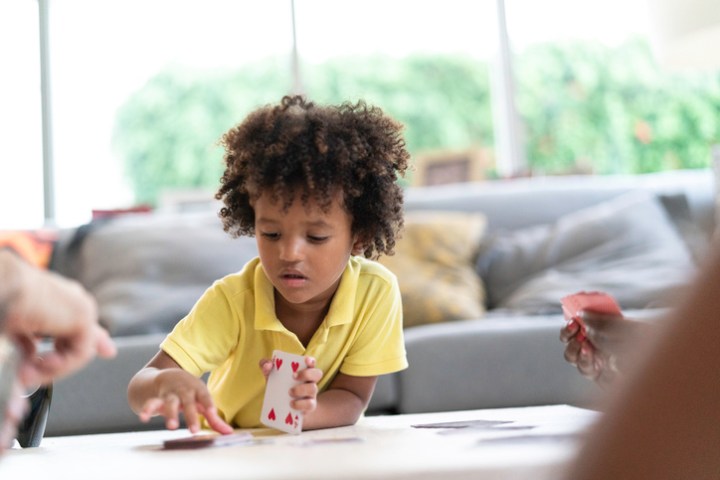How to harness the power of boredom to fill your children’s free time

While writing The Science of Boredom, psychologist Sandi Mann discovered just how much a child can achieve when we let their minds wander. Looking at her own son’s imaginative inventions, perhaps we shouldn’t become too stressed trying to occupy our children’s every waking hour, and should sometimes let our children be bored.
The plaintive cry of ‘I’m bored’ reverberated around my house with alarming (for some) frequency during the writing of my book, which largely took place at weekends or during the evening. My 7-year-old son soon learned that my standard response to his complaint was, ‘Great!’ Although at times I did resort to the television as a sitter, I tried very hard to resist, even though his cries were, at times, heart-rending. So, am I a cruel, neglectful mum, putting my career before the needs of my child? You tell me. But, first, here are some of the things that my little boy eventually came up with to do whilst he was ‘bored’ during the writing of this book:
- He made a card factory; he created different greeting cards for different occasions and created a stand to display them. He then attempted to persuade members of the family to buy them.
- He wrote several newspapers and magazines.
- He created a whole fantasy world called ‘Canchowie’ with fictional places and destinations.
- He conducted a long experiment in ‘chain reactions’ by making devices that roll a can in such a way that it would hit another object and push that onto something else until he had a whole chain reaction of events.
- He created his own ‘office’ in his bedroom in imitation of mine (which I duly spent time admiring).
- A model 3D ‘shop’ was crafted using just paper and sticky tape. He even put in paper clothes to ‘buy’.
- He came up with a new invention of a three-in-one pencil. Again using craft materials, he put together a contraption that included pencil, sharpener and eraser in one.
- He made a fancy dress outfit.
- New songs were composed, including one entitled ‘The Coolest Man on Earth’ and another ‘There’s a Robber in the House’.
- A game was produced, complete with 3D board, paper money and game pieces. The game was called Backdrop Town and I am not entirely sure what the objectives were (it might need some refining before it reaches mass production stage!).
As mothers and fathers, we possibly fear boredom the most. We are terrified to allow our kids to be bored because this reflects our own shortcomings as parents. We want them to be fulfilled, busy, creative and, above all, occupied, so when that whine of ‘I’m bored!’ singsongs through the house, our hearts sink and our very beings quiver with failure.
But boredom can stimulate creativity. In my own research, I found that a significant minority of people (20 per cent) claimed that being bored actually makes them more creative – with 16 per cent claiming that being bored out of their minds helps them come up with new ideas at work. So, it is no bad thing to allow our children to experience boredom from time to time, to encourage resourcefulness and creativity in them. Some argue that it is only through boredom that individuals tend to engage in introspection and self-reflection. When we are busy, occupied and fulfilled, we rarely stop to ponder on our abilities, attitudes and qualities; it is only when we have the luxury of being bored that we have time for such introspection.
How can we harness the power of boredom and turn it into a positive, motivating, creative force?
There are two kinds of boredom that can be harnessed: existential boredom (when life itself is boring) or task-specific boredom (when what we are doing right now is boring). Here is how you can harness the power of both kinds of boredom:
Existential boredom:
- Encourage your child to look around them as though they are in a new place. What do they see? Gaze at the world with fresh eyes. Marvel at the details; look for things that are exciting and innovative.
- Become curious. How does this work? What happens if I do this? Can this be taken apart? What is this made from? Such curiosity prevents boredom from kicking in by making the dullest things more interesting. Researchers have shown that being curious not only helps us remember the things we are curious about, but also helps us recall the things we are not curious about. It is thought that curiosity puts our brains into a state that is helpful for memory and learning – which helps maintain our interest in things that might otherwise have seemed boring.
- Turn the TV off. That goes for the internet, Facebook and Wii too. These offer two-dimensional stimulation when our brains need three or four dimensions to be stimulated in order to feel satisfied. If you have a garden, encourage your child to get outside as we cannot meed our need for neural stimulation by staying indoors all the time.
- Task-specific Boredom
- Get back into the ‘flow’. Mihaly Csikszentmihalyi is well known for the notion of ‘flow’ in creativity. He describes flow as ‘being completely involved in an activity for its own sake . . . time flies . . . Your whole being is involved, and you’re using your skills to the utmost.’ In his book, Beyond Boredom and Anxiety: Experiencing Flow in Work and Play, Csikszentmihalyi examines motivation based on a study of a half-dozen groups of people involved in pursuits such as rock climbing, composing, dancing and playing chess.
- Refocus your child’s attention by helping them find interest in the task at hand. Tasks are more likely to be boring if they are repetitive or routine. Try to make them less so by finding a different way to do the task, by breaking the task down into smaller parts or by focusing on the end result. Bored people feel their actions are meaningless and so they are motivated to engage in meaningful behaviour, so search for something meaningful in what you are doing.
- Do something more stimulating at the same time. Sometimes we can provide the missing extra stimulation we crave by adding another dimension to our physical sensations whilst we labour on the boring task. Playing music, for example, can meet this need, as can having the TV on in the background – when your child maintains the TV helps them concentrate on their homework, they could be right!
The obsession society seems to have today with eliminating the merest hint of boredom in our lives means we are becoming so accustomed to filling every moment with stimulation that we are developing a lower threshold for boredom, which in turn means we bore more easily. And the more bored we get, the more we try to fill that boredom with our ‘junk food devices’; just as junk food provides easily accessible but empty calories, so our devices provide easily accessible but empty stimulation. Filling up on junk food means we are unable to eat the healthy stuff that provides the vitamins and nutrients we need to develop; trying to cure our boredom with a junk diet of passive electronic stimulation means we are unable to access the more active stimulation that leads to healthier development. And so boredom begets boredom.
The cure, then, is to allow downtime back into our lives. We must stop over-stimulating ourselves and our children so we become less reliant on a fast-paced, constantly changing stream of novel stimuli to keep the ennui at bay. We need to reduce our cravings for this unhealthy diet and start to enjoy the boost that downtime can give us. In other words, we need to embrace, not fear, boredom.
Bored is good. Downtime has its upside.







